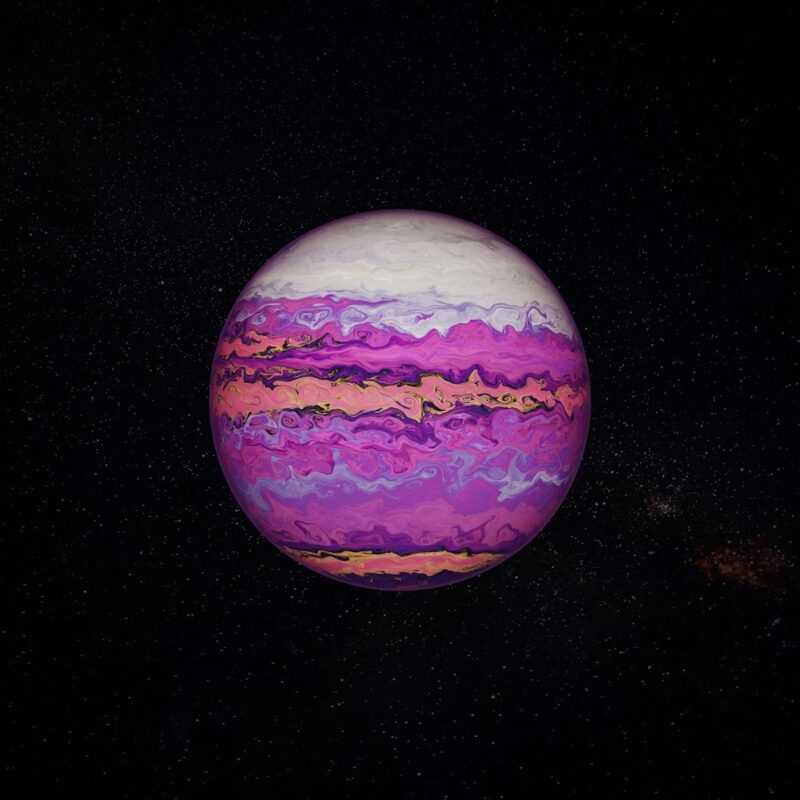Is alien life purple?
When we look at Earth from space, the color green means life. It represents trees, grass, crops and everything that grows with the help of chlorophyll. Chlorophyll is a pigment found in nearly all plants that use photosynthesis to absorb energy from the sun and turn light into fuel. Chlorophyll also gives plants their green color. But in some environments on Earth without sunlight or oxygen, life uses infrared radiation for energy. And many of these bacteria are purple. What if life on other worlds uses infrared radiation instead of sunlight? According to a press release from Cornell University on April 16, 2024, we’d need to be looking for a light fingerprint of a purple planet.
Lígia Fonseca Coelho of Cornell University said:
Purple bacteria can thrive under a wide range of conditions, making it one of the primary contenders for life that could dominate a variety of worlds.
Join our community of passionate astronomy enthusiasts and help us continue to bring you the latest astronomy news and insights. Your donation makes it all possible.

Coelho is lead author of a new study titled Purple is the New Green. The Monthly Notices of the Royal Astronomical Society: Letters published the peer-reviewed study on April 16, 2024.

Looking for purple life
The researchers said that some of the next-generation telescopes in the works may be able to detect the purple light fingerprint of these worlds. With more than 5,500 exoplanets known, the telescopes will have many targets. Some of the future observatories that will study them include the Extremely Large Telescope and the Habitable Worlds Observatory. Both of these telescopes – not yet constructed – will look at the chemical composition of exoplanets in the habitable zone of their stars.
As scientists wait for the construction of these telescopes, they’re busy building a catalog of colors and chemical signatures. These colors could be what diverse organisms on other worlds present in an exoplanet’s reflected light. Co-author Lisa Kaltenegger of Cornell University said:
We need to create a database for signs of life to make sure our telescopes don’t miss life if it happens not to look exactly like what we encounter around us every day.

Alien life: purple is the new green
The Cornell scientists dove into their work of finding purple bacteria, including sampling from a pond right on campus. Technically, purple bacteria have a range of colors that include yellow, orange, brown and red. All these bacteria live in conditions that use infrared light – or heat – to survive. Their form of photosynthesis absorbs infrared without making oxygen.
Coelho said:
They already thrive here (on Earth) in certain niches. Just imagine if they were not competing with green plants, algae and bacteria: A red sun could give them the most favorable conditions for photosynthesis.
So, the researchers think purple bacteria would be a good match for cool, red dwarf stars. And red dwarf stars are the most abundant type of star in our Milky Way galaxy.
Using models simulating various conditions, the researchers found that:
… both wet and dry purple bacteria produced intensely colored biosignatures.

What if we find a purple world?
Coelho said they’ll be using their new tools to look for purple bacteria thriving on:
… a frozen Earth, an ocean world, a snowball Earth or a modern Earth orbiting a cooler star.
But if we spot a purple dot around a star, how do we know it means life is there? The first step is that researchers would try to rule out other sources that could be responsible for the purple hue. That would include colorful minerals, another area that researchers are cataloging.
If we did detect life in just one place in our vast universe, it would suggest that life might be widespread in the rest of the universe.
Kaltenegger said:
We are just opening our eyes to these fascinating worlds around us. Purple bacteria can survive and thrive under such a variety of conditions that it is easy to imagine that on many different worlds, purple may just be the new green.
Bottom line: Is alien life purple? Researchers from Cornell University think that as far as alien worlds go, purple may be the new green.
Source: Purple is the new green: biopigments and spectra of Earth-like purple worlds











